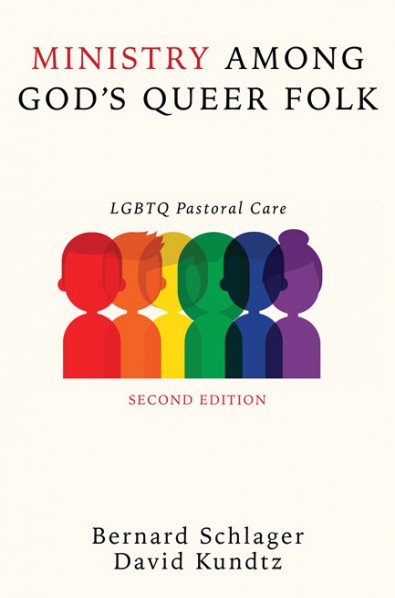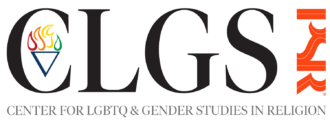Create Inclusive Space
Congregational space can be exclusive space especially with regard to transgender individuals. For instance, most congregations still do not provide all-gender restroom facilities and this omission can be a considerable barrier for transgender persons who belong, attend, or visit your congregation. Providing at least one accessible all-gender restroom is an important sign of welcome because many transgender individuals encounter hostility from others when they attempt to use a single-gender restroom. (Such restrooms, incidentally, are also particularly useful for a parent with an opposite gender child and for people with caregivers.)
Your congregation will also want to consider how educational and social programs restricted by gender can create exclusive space. This does not mean, of course, that women’s groups or men’s groups no longer have a home in the congregation but that such groups should be encouraged to consider the fact that the congregation is striving to become a community of welcome and care for transgender people. Each group should be asked to discuss and explore how they can include transgender individuals who may want to take part in the group’s activities.
Celebrate Inclusive Rituals
A congregation that is a community of care not only includes LGBTQ people as leaders and participants in its rituals and liturgies but it also celebrates their lives, their relationships, and their families through worship. Most important, worship in a congregation that welcomes and includes queer people takes account of their presence and recognizes their needs. For instance, the vocabulary of worship should be sensitive to the fact that there are families in your midst with two mothers or two fathers. When planning a memorial service with the survivors of a single gay man, ask them who should be invited to play special roles in the service and, in particular, who should be asked to offer words of eulogy. Forms of prayer that divide a congregation into women and men may alienate some transgender people who don’t identify as either one gender or the other. Developing sensitivity to the presence and needs of queer people in worship can be a positive learning experience for the entire congregation and one way to facilitate such learning is to include LGBTQ individuals as members of the congregation’s worship committee or as ad hoc members of a group planning a particular service.
In addition to making all worship inclusive, congregations can celebrate those events that are unique to queer people. Below are a few examples of the ways in which a congregation can do this through worship and ritual:
- Coming Out Services: Since coming out is a pivotal event in the lives of many queer people, your congregation might consider devoting one worship service a year to celebrate people in your congregation who have recently come out as LGBTQ. Recognition of individuals who have recently come out can also be celebrated as one part of a larger Sabbath or Sunday worship service.
- Rituals Marking Gender Transitions: There are several events in the lives of transgender people which can be recognized and celebrated within the context of congregational worship, including the decision of an individual to embrace their true gender, the choice of a new name, and the preparation for and completion of surgical procedures for a person who is transitioning. Of course, planning for a worship service or ritual moment within a larger service should be done with the transgender person(s) involved; there are now several resources available which provide creative models for ritualizing important moments in the lives of transgender persons.
- LGBTQ Pride Services: Celebrate gay pride and honor the LGBTQ civil rights movement sometime during June, which is recognized the world over as Gay Pride Month. Special prayers, sermons, and songs can be especially effective ways of celebrating LGBTQ pride and raising awareness within the congregation about queer history and culture. Decorating the interior worship space with rainbow colors, the traditional colors of queer pride, or hanging a rainbow flag outside the church or synagogue are other ways to highlight your congregation’s pride celebrations; they will also be especially meaningful to many queer people.
- International Transgender Day of Remembrance: First marked in 1999, this day remembers and honors annually the many Transgender people who have been murdered during the past year. Your congregation can join in solidarity with countless other people around the world who mark this day through vigils held in November. “The Transgender Day of Remembrance serves several purposes. It raises public awareness of hate crimes against transgender people, an action that current media doesn’t perform… [it] publicly mourns and honors the lives of our brothers and sisters who might otherwise be forgotten. Through the vigil, we express love and respect for our people in the face of national indifference and hatred. Day of Remembrance reminds non-transgender people that we are their sons, daughters, parents, friends and lovers… and [it] gives our allies a chance to step forward with us and stand in vigil, memorializing those of us who’ve died by anti-transgender violence.”
- Marriages/Holy Unions, Separation, and Divorce: Make your congregation a place of welcome for LGBTQ couples who want to marry or enter into covenants of commitment or holy unions. Congregations of many religious traditions have been celebrating the marriages and unions of LGBTQ couples for many years now, of course, and they remain uniquely powerful opportunities for the recognition of the love and commitment of queer people within the context of a faith community. For LGBTQ individuals and/or couples who want to ritualize their separation or divorce, extend your welcome by providing liturgical opportunities to mark these losses.
- Celebrations to Honor Queer Families: Your congregation can honor the lives of LGBTQ people and their families in many ways. The adoption of a child by a queer individual or couple, the reconciliation between parents and their queer child, and the celebration of wedding/holy union anniversaries provide opportunities for celebrating LGBTQ lives, loves, and families.
- AIDS Liturgies: While AIDS is a disease that does not discriminate on the basis of sexual orientation, living with HIV/AIDS is a continuing reality for many queer people, especially queer people of color. The annual recognition of World AIDS Day in December provides an excellent opportunity for your congregation to pray for everyone throughout the world who is living with the disease and to remember those who have died from it. Consider hanging AIDS quilts in your sanctuary as a way of reminding congregants of the ongoing reality of HIV/AIDS in our local, national, and international human community.
- Recognition of LGBTQ Religious Leaders: Your congregation can celebrate in worship an LGBTQ person whom it has supported, sponsored, or called to the ordained ministry. Supporting an LGBTQ member who has entered the seminary or calling an out queer person to ordained ministry are some especially appropriate events to celebrate in spoken prayer and ritual.
Adapted from Schlager & Kundtz, Ministry Among God’s Queer Folk: LGBTQ Pastoral Care (Second Edition, 2019): pp. 166-169.


